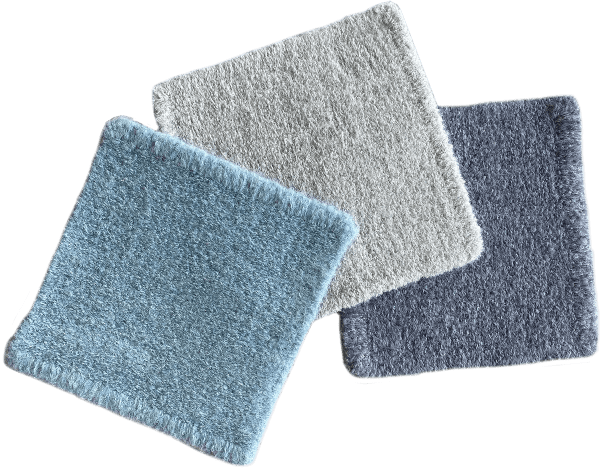We make beautiful rugs in a variety of fibers to suit different tastes, needs and budgets. Your NIBA rug consultant can explain the unique properties of each fiber and guide you to the right decision for your design project.
View Shiny Fibers – View Plant Fibers – View Outdoor Fibers
Mongolian Wool
Exceptionally rare Mongolian wool is only available from one factory in India. The undercoat of the goat, which is sheared only once per year, produces very long, shiny, straight hair.
A special weaving technique enhances the sheen of the wool fibers and produces a very flexible rug often mistaken for silk. This is truly a one-of-a-kind fiber for your most discerning client.
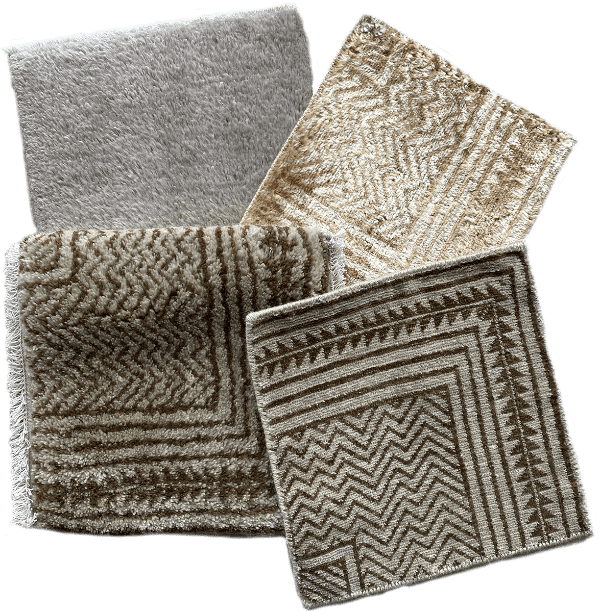
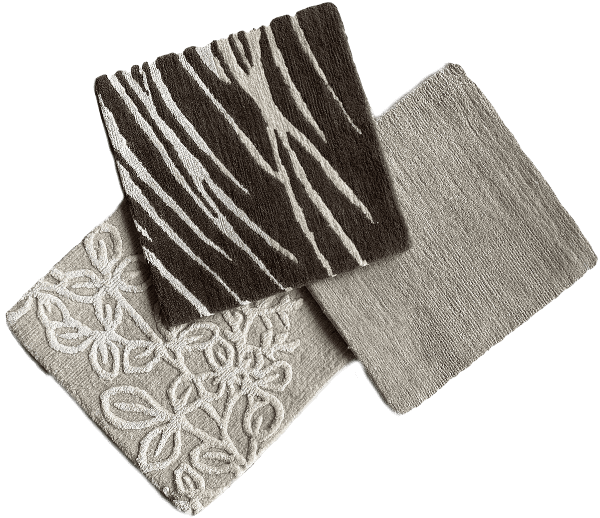
Himalayan Wool
This very fine wool comes from goats in the Himalayan Mountain range. Because the goats grow very long hair in this cold climate, Himalayan wool has a very high lanolin content, making it very cleanable. Its natural color ranges from creamy white to yellow to dark brown, and when dyed, it produces a natural, very slight variance in color. Rugs made of Himalayan wool appear to gain sheen and luster with age. All of our Tibetan knot rugs are made with this wool.
New Zealand Wool
The least textured and whitest wool available, New Zealand wool is a good choice if you want strong primary colors and a solid, more saturated look. Because the wool is machine-carded and spun, the result is a more consistent looking wool. New Zealand wool is ideal for hand-tufted rugs because its fibers are long enough to be threaded through hand-operated or electric tufting tools.
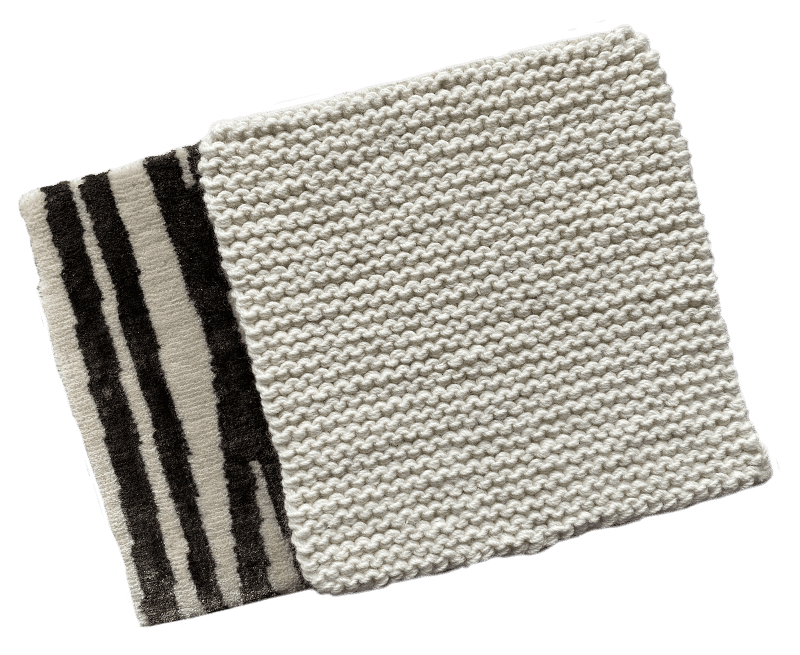
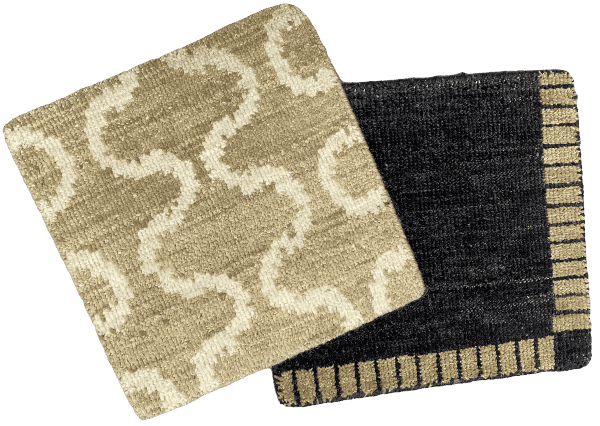
Indian Wool
Indian Wool has a very textured appearance but minimal length yarns. Combining Indian wool with New Zealand wool produces a rug with the perfect combination of texture, elasticity and yarn length.
Goat Mohair
Mohair is a wool that comes from the underbelly of Angora goats. Soft and shiny, goat mohair is a less expensive alternative to Mongolian wool, and it’s very cleanable due to its lanolin content.
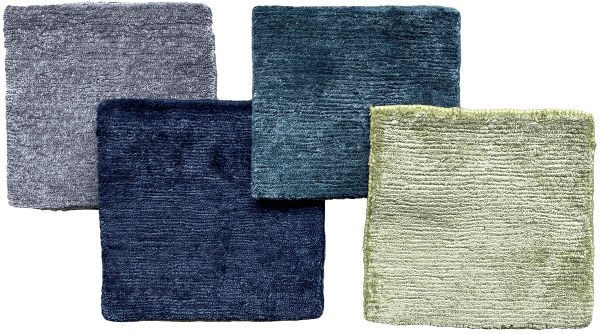
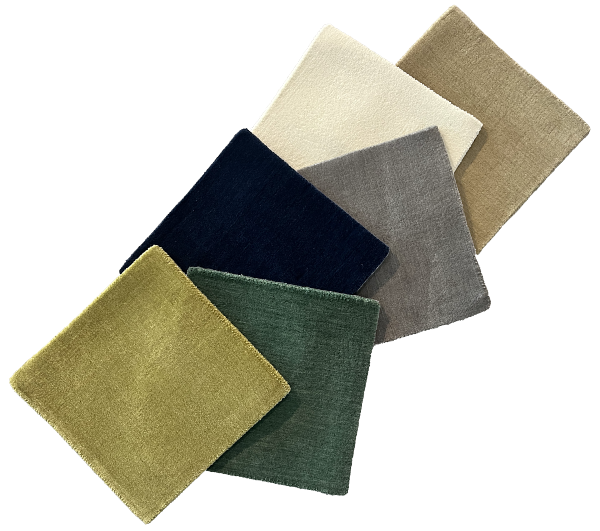
Merino Wool
Unlike other wools, Merino wool is very soft to the touch and brings a wonderful feel to a handmade rug. But its softness in no way diminishes performance – Merino wool rugs are naturally stain, soil and crush resistant.
This popular wool, which comes from Merino sheep, is the same wool that’s used for clothing. This type of wool is thinner than regular wool, making it a good choice for thinner rugs. As with all wool, Merino wool is sustainable, renewable, and biodegradable.
Alpaca Wool
Alpaca wool comes from the fleece of the alpaca which is native to South America. Alpaca is a popular choice for plush, hand-tufted shag rugs. When combined with silk, Alpaca shags gain an attractive luster and incredible softness. We also offer a beautiful Alpaca boucle flatweave with a hand-bound border. Made in Peru, our Alpaca wool rugs can be created in a solid color, and they can also be tweeded with 2 or 4 colors. However, they cannot be made into a pattern.
